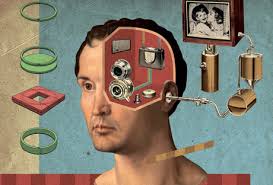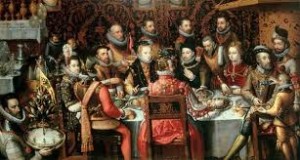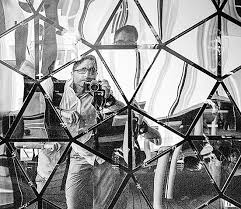It represents the vaster psychological reality in which our own subjective life resides.
That framework has been glimpsed through out history by many individuals, and given many names. If we visit a foreign country, however, we have a tendency to describe the entire nation in terms of the small area we have visited, though other portions may be quite different in geography, culture, and climate.
The individuals who have to one extent or another perceived Conscious-Mind-2 have, then, described it according to their own brief visits, taking it for granted “that the part was a representative sample of the whole.” Plato conceived [of] it as the world of ideals, seeing within it the perfect model behind each imperfect physical phenomenon.
He thought of that realm as eternal and unchanging, a perfect but frozen composite that must indeed inspire men and women toward achievement on the one hand, and on the other reproach them for their failure, since their achievements must necessarily seem puny in contrast. Plato then saw Conscoious-Mind-2 as a splendid, absolute model in which all the works of man had their initial source. Man and woman, according to this concept, could not affect that ideal world one whit. He could, however, use it as a source of inspiration.
Some ancient religions put the existence of gods there, and saw the spirits of each living thing as existing primarily in that invisible medium of reality. Therefore, Conscious-Mind-2 has always been represented in one way or another as a source of our world. Christianity saw it as heaven, inhabited by “God the Father”, His Angels, the Saints, and [the] deceased faithful.
Once scientists theorized the ether as the medium in which the physical universe existed. Conascious-Mind-2 is the psychological medium in which the consciousness of the world exists. The word “ego” is much bandied about, and in many circles it has a poor reputation. It is, however, as I use it, a term meant to express the ordinarily conscious directive portion of the self. It is our conscious version of what we are. It is directed outward into the physical world. It is also aware, however, of some of our “unconscious” activities. It is the one we identify with, so it is aware of our dreams, for example, as we are, and it is quite conscious of the fact that its existence rests upon knowledge that it does not itself possess.
As we have an ego, fully conscious, directed toward the physical world, we also have what I call an inner ego, directed toward inner reality. We have, in other words, a potion of oneself that is fully conscious in Conscious-Mind-2. The ego in our ordinarily world, which again we will call Conscious-Mind-1, is uniquely equipped to deal with that environment. It manipulates with rules of cause and effect and consecutive moments. It deals with an objectified reality. It can stretch its capacities becoming far more aware of inner events than it is normally allowed to do, but its main purpose is to deal with the world of effects, to encounter events.
The inner ego is fully conscious. It is a portion of us, however, that deals with the formation of events, that glories in a rather rambunctious and creative activity that our specifications of time and place physically preclude. The unconscious, so-called, is — and quite conscious, but in another realm of activity. There must be a psychological chamber between these two portions of the shelf, however — these seemingly undifferentiated areas, in which back-and-forth translations can occur. Dream periods provide that service, or course, so that in dreams the two egos can meet and merge to some extent, comparing notes like strangers who perhaps meet to some extent, comparing notes like strangers who perhaps meet on a train at night, and are amazed to discover, after some conversation, that they are indeed close relatives, each embarked upon the same journey though seemingly they travelled alone.
In those terms the undifferentiated area is actually filled with motion as psychological transitions and translations are made, until in dreams the two egos often merge into each other — so that sometimes we waken briefly with a sense of elation, or a feeling that in dreams we have met an old and valued friend.
Our world is populated by individuals concentrating upon physical activities, dealing with events that are “finished products” — at least in usual terms. Our inner egos populate Conscious-Mind-2, and deal with the actual creation of those events that are then objectified. Since “the rules” of Conscious-M
ind-2 are different, that reality is not at all bound by our physical assumptions. It contains, therefore, the inner ego of each individual who has lived or will ever live upon the earth.
I am speaking of that framework now only as it applies to our world — not in its relationship to other realities. Conscious-Mind-2 is described as the heroic dimension. There is a great give-and-take between the two frameworks — our regular working one, Conscious-Mind-1, and this other more comprehensive reality. We need to understand the creative ramifications involved, for the prime work of our world is actually done in that other wider aspect of our existence.
Physically we have at our fingertips, certain accumulations of knowledge, objectified through the passage of information verbally through the ages, in records or books, and through television. We use computers to help our process information, and we have a more or less direct access to physical knowledge. We acquired it through the use of our senses. There is systemized knowledge, where men and women have accumulated facts in one particular field, processing it in one way or another. Our own senses bring us information each moment, and that information is in a way already invisibly processed according to our own beliefs, desires, and intents.
We will ignore as information certain stimuli that another person, for example, will latch on to immediately. Even in our own world, then, our interests and desires serve as organizational processes that screen out certain information. The information available in Framed-mind-2 is in our terms infinite.
It is the source of our world, so therefore it contains not only all knowledge physically available, but far more. I do not want to compare the inner ego with a computer in any way, for a computer is not creative, nor is it alive. We think of course of the life that we know as LIFE. It is, however, only the manifestation of what in those terms can only be called the greater life out of which our life springs. This is not to compare the reality that we know in derogative terms to the other-source existence, either, for our own world contains, as each other world does , a uniqueness and an originality that in those terms exists nowhere else — for no world of existence is like any other.
The inner ego is a portion of the shelf, for example — is the portion of our self — that is aware of our reincarnational activities. It is the part of us that exists outside of time, yet simultaneously lives in time. We form our own reality. The ego that we are aware of obviously could not form our own body for us, however, or grow our bones. It knows how to assess the conditions of the world. It makes deductions. Our reasoning is highly important, yet alone it cannot pump our blood or tell our eyes how to see.
The inner ego does the actual work that brings about the events we have decided upon. In very simple terms, if we want to pick up a book, and then do so, we experience that events that occurred to bring the motion about. The inner ego directs those activities.
If we want to change our job, and hold that desire, a new job will come into our experience in precisely the same fashion, in that the inner events will be arranged by the inner ego. A body event involves the working of numerous muscles and joints and so forth. An event involving a job change concerns motion on the part of many people, and implies a network of communication on the part of all of the inner egos involved. Obviously, then, a mass physical event implies an inner system of communications of proportions that would put out technological communications to shame.
We may then, unknowingly acquire an illness and recover, never aware of our malady, being healed because of a series of events that would seemingly have nothing to do with the illness itself — because in Conscious-Mind-2 the inner ego, knowing both the reason for the illness, and its cure, brought about those precise situations that remedied the condition. Such events happen automatically, when nothing hampers recovery at our end.
The communication between the inner and outer egos should obviously be as clear and open as possible. As a general rule, the inner ego depends upon our assessment of physical events. Our involvement in the private aspects of our living, and our participation in mass events, has much to do with our estimation of the physical situation, and with our beliefs and desires regarding it. A very simple example: If we want to write a letter we do so. There is no conflict between our desires, beliefs, and the execution of the act, so the action itself flows smoothly. If for some reason or another, through a poor assessment of our reality, we believe that such an act is dangerous, then we will hamper the flow between the desire and the execution. The flow or creativity begun by the inner ego will be impeded.










